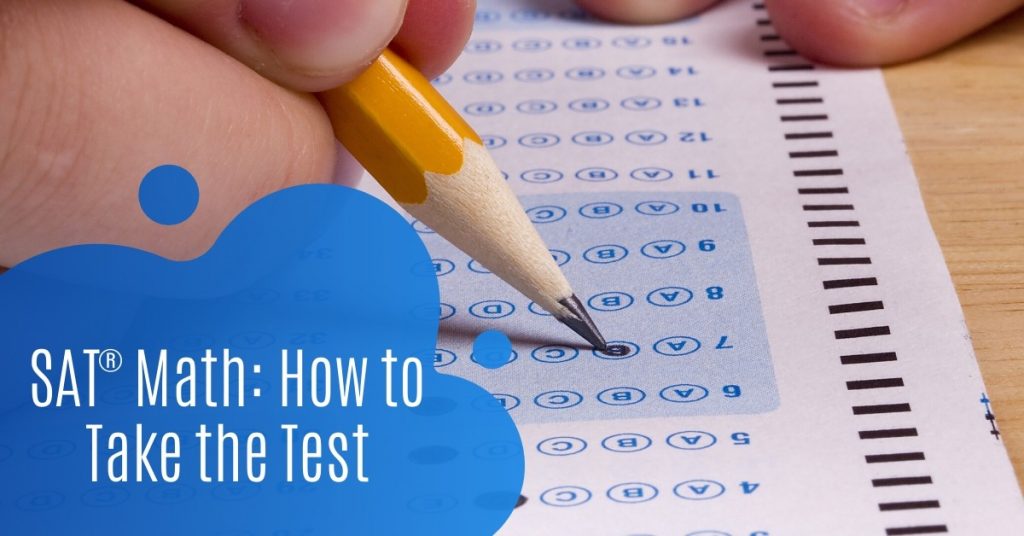It’s good to have a plan in place for the two Math sections of the SAT® (calculator and no-calculator). Like most things in life, it’s wise to be prepared. An I’ll-just-wing-it mentality is a set up for failure. The I’ll-figure-it-out-when-I-get-there game plan is a recipe for disaster.
The good news about your test is this: If you’ve used good study tools in advance, and if you’re serious about doing your best on test day, there is nothing to worry about. You’re going to do great on the SAT.
Here are four “best practices” when it comes to taking the Math sections of the SAT:
1. Be aware of the clock and pace yourself accordingly
The first Math section on the SAT is a 25-minute section and calculators are not allowed. The section is made up of 20 questions — 15 multiple choice questions and 5 questions where you will be asked to produce the answer (these are also known as “grid-ins”).
This means you will have one minute and fifteen seconds per question in this section.
The second Math section is a 55-minute section and calculators are allowed. This section is made up of 38 questions — 30 multiple-choice questions and 8 grid-ins.
This means you will have one minute and twenty-seven seconds per question in this section.
As you take your test, keep an eye on the clock. Don’t be paranoid or obsessed with the time, just be aware of your pacing. Resist the trap of spending too much time on any one question. If you’re stuck, leave that question and come back to it after completing the rest of the section.
It’s a good idea to use practice tests and test prep resources in advance of your test. This will help with “clock pressure” because these resources mimic the exam and give you the needed testing experience. Once you get to your SAT testing day, it will seem like a breeze!
2. Find out what is actually being asked
The College Board can be tricky. This isn’t their first rodeo after all. Their writers will often write lengthy questions that can appear intimidating, leaving some students to huff, “I don’t even know what they’re asking me.”
Approximately 25% of the questions asked will be word problems. This dictates that you know how to utilize key math terms and translate the problem into an equation you can solve.
Don’t let a long word problem throw you off of your game. Take it one step at a time…
- Go through the question line by line
- Note the pertinent information
- Break it down into the appropriate equation form
- Solve the problem
Boom. You nailed it!
3. Double-check your answers
When they’re “on the clock,” many students feel they don’t have time to look over their work and check their answers. False. You do have the time, so for each answer, take a moment to double-check your work, ensuring that you don’t miss a question due to a silly oversight.
4. Show up on test day with confidence
Your attitude and mindset on test day will go a long way in determining how well you perform. Students who are exhausted, terrified, hungry, or distracted do not do as well as students who are well-rested, confident, satisfied, and prepared.
The night before your test, make sure you get a good night’s sleep. The next morning, prepare a nutritious breakfast and allow for a few minutes to go over any last-minute practice questions in a relaxed fashion.
If you use a good test prep resource to start your preparation weeks and even months before your exam, your confidence will be sky high on test day. The earlier you begin to study, the more opportunity you’ll have to identify any weak academic areas where improvement is needed.
Are you preparing to take the SAT? If so, visit UWorld and see why we are the test prep resource you need. Our challenging practice questions, detailed explanations, and easy-to-understand performance tracking will have you prepped and ready to hit your target score on test day. Check us out and sign up for your FREE trial today.




